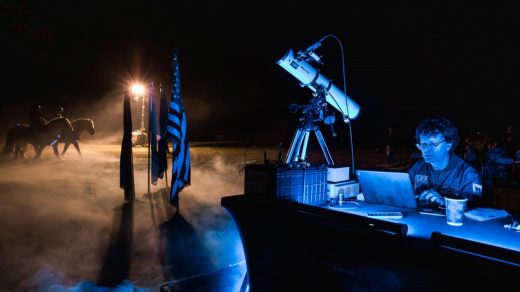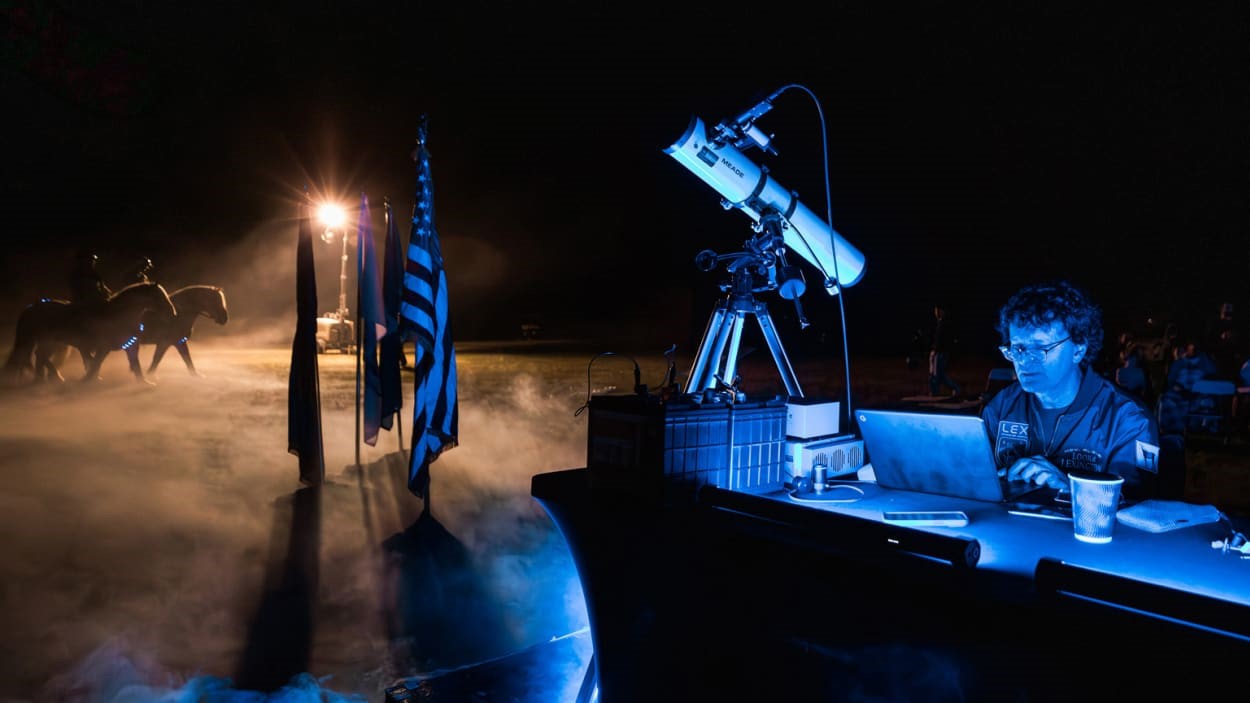When aliens come to Earth, they’re going to Lexington, Kentucky first
As you are reading this, a message is hurtling through space. That message, which is encoded in short pulses of light, is actually an invitation to visit Lexington, Kentucky, and its target audience—if it exists—lies 40.66 lightyears away from Earth.
Aptly named “Hey Aliens! Look at Lexington,” the invitation is part of a tourism campaign directed at extraterrestrials. The message was beamed toward a distant star called Trappist-1, which is the most studied planetary system outside of our own and is orbited by at least seven Earth-sized planets. As such, it will take 40 years for the message to arrive—and another 40 years for us to potentially hear back. But of course, this isn’t about aliens at all. This is about us humans, who are bombarded with ads day in, day out, and who may be tempted to visit Lexington by an ad that is so witty and so whacky that it may just break through the noise.
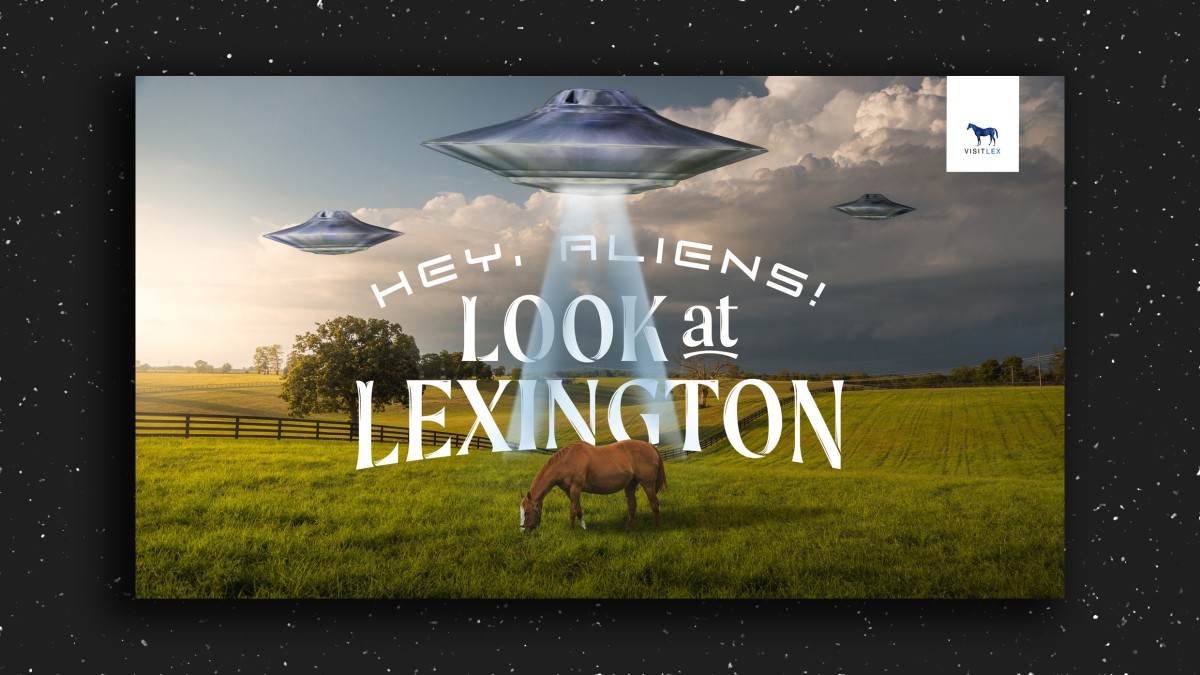
“Our mission is to market and promote Lexington, Kentucky to ultimately bring visitors and make Lexington a better place for our locals and residents,” says Leslie Miller, VP of marketing at VisitLex. “Travel and tourism is a really crowded place, so we’re looking for ways to create spikes in the conversation around Lexington.” So far, so good: In less than two weeks, the campaign has generated over 2 billion impressions and web traffic to VisitLex has gone up nearly 50% compared to the same period last year.
The campaign is comprised of two elements: the encoded message that was beamed into space (more on that later), and an accompanying “extraterrestrial’s guide to Lexington” that takes the form of a website and introduces aliens to bourbon (“that brown stuff humans love to sip”), thoroughbreds (“our four-legged superstars”), and boutique hotels (which will come in handy “after years of suspended animation in a cryogenic pod”).
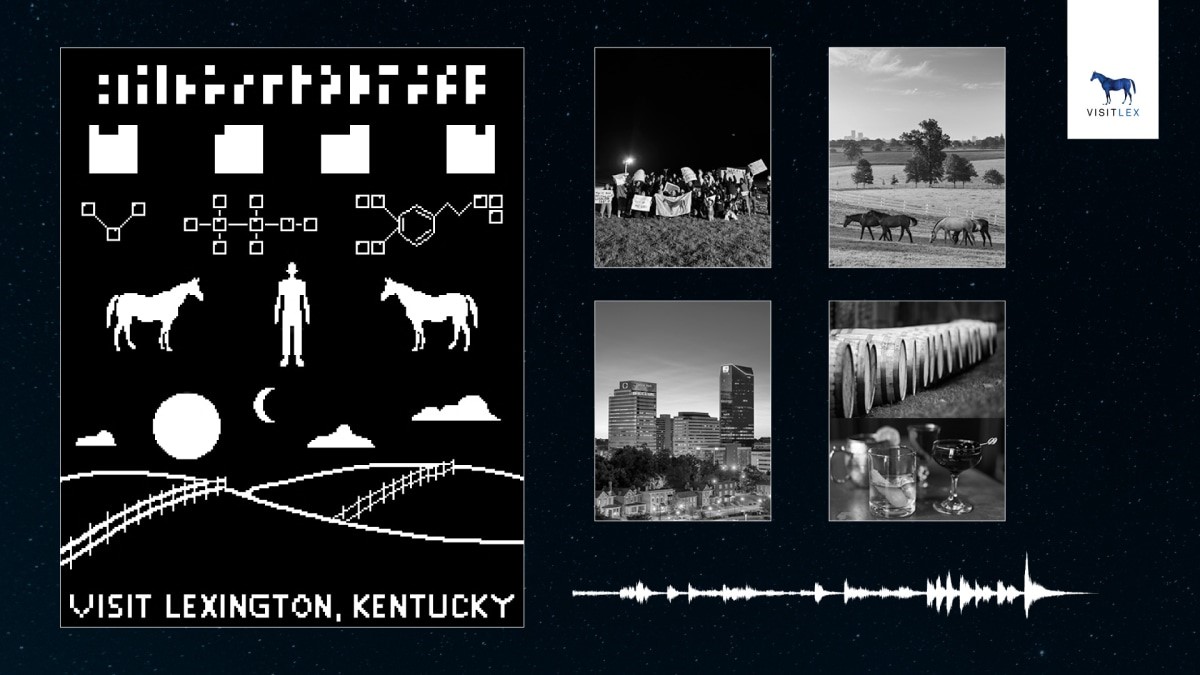
The campaign is purposefully tongue-in-cheek to convey its residents’ easygoing and inviting nature, but the underlying science is very real. VisitLex collaborated with five Lexington scholars and scientists from the University of Kentucky, and conducted a METI Summit (Messaging to Extraterrestrial Intelligence) to explore the ethics of sending a message to aliens. They then partnered with the Kentucky Horse Park, where they eventually beamed the message in October 2023.
This isn’t the first time humans have tried to engage in interstellar conversation. Back in 1974, we aimed a giant space radio at a star cluster called Messier 13 (M13). The Arecibo message included binary-encoded information about the basic principles of mathematics and science, human biology, the structure of DNA, plus a crude diagram depicting Earth’s position in the solar system, as well as an illustration of the Arecibo telescope in Puerto. To no one’s surprise, the conversation remains a monologue to this day.
The new message looks a lot like the Arecibo Message, with a few twists. It is a bitmapped diagram (or a picture that is made up of ones and zeros). It includes symbols for the elements of life on Earth (think carbon, oxygen, nitrogen, and hydrogen). There are molecules for water and ethanol (because Lexington is known for its bourbon!) and dopamine (because Lexington is fun!) Aliens can also admire an illustration of Lexington’s iconic bluegrass hills and listen to local blues artist Tee Dee Young riff on an electric guitar.
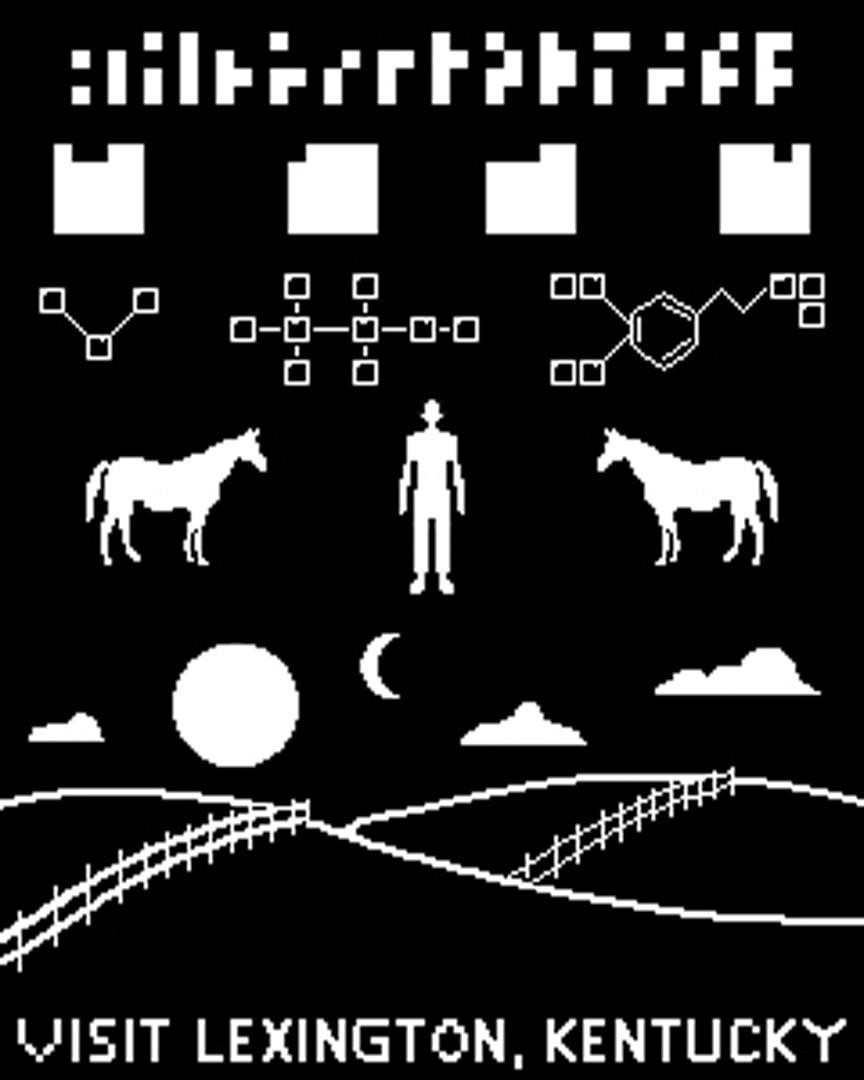
To the human eye, all of this information is presented in the form of a black-and-white poster with molecules and a pixelated landscape (plus a soundbite.) The aliens, of course, will only experience the message that way if they can decrypt it. Robert Lodder, an astrobiology and SETI (Search for Extraterrestrial Intelligence) expert who was instrumental in the making of the campaign, says we’ve never met alien bacteria so we can only speculate about their level of intelligence based on the diversity we have observed on Earth. To maximize our chances, his team chose to convey the information through binary code because it’s the simplest way to break down a message into a series of ones and zeroes. “I think even slightly intelligent aliens would be able to decode this pretty quickly,” he says.
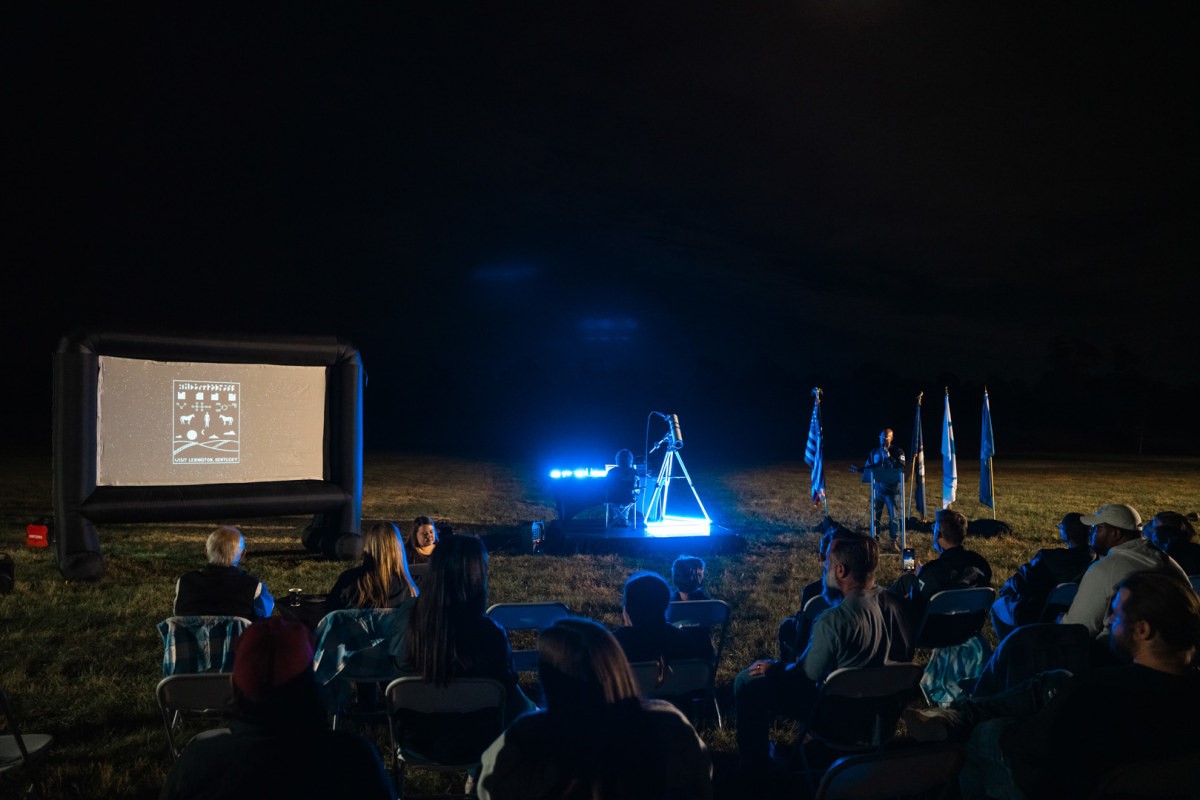
Once the team agreed on the contents of the message, they had to transmit it. Lodder’s team used a special infrared laser to send a burst of light pulses through a telescope. The entire transmission lasted about 10 minutes (compared to about three minutes for the Arecibo message) and the team had to notify the Federal Aviation Administration ahead of time “so we don’t accidentally hit a plane,” says Lodder.
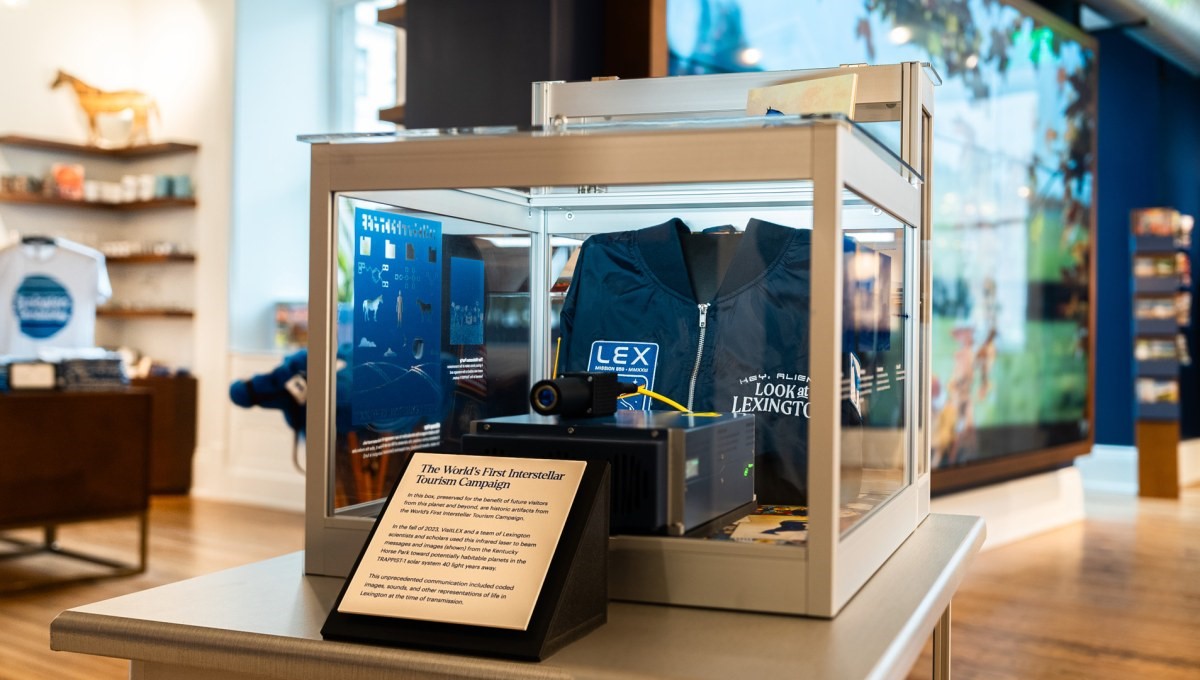
The telescope was necessary for two reasons. One, it lets you steer the lasers, which is crucial considering the Earth is constantly spinning and without recalibrating the laser, the message would end up missing its distant target. And two, a telescope can collimate the light that comes out of a laser, meaning that the light rays won’t focus into one point then spread outwards, but instead run parallel without diluting the message.
Whether or not the message will reach its final destination remains a little fuzzy. Lodder says that aliens, in theory, should be able to identify that the pulses are coming from an artificial source (the wavelengths are much narrower than those of natural light) but over the course of 40 lightyears, even artificial light is bound to spread and dilute. “I can guarantee that some number of photons will get there,” he says. “Whether that is enough for them to decrypt depends on their technology.”
I suppose we’ll have to wait at least 80 years to find out. And in the meantime, VisitLex wants you to know that aliens aside, you are welcome too.
(15)

